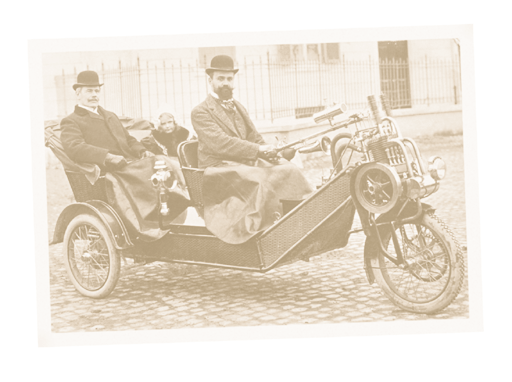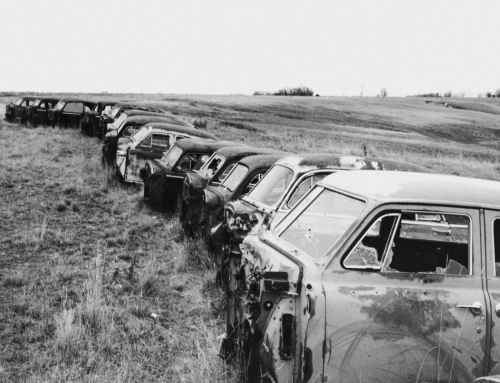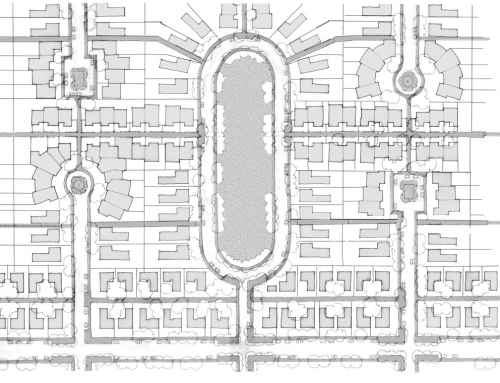Child-safety seats baffle parents, even the most technologically oriented and safety-conscious ones. Selecting the right seat is complicated because seat types change as a child grows. Seats and harnesses must be assembled and installed in the car, and that can be tricky or nearly impossible depending on the car’s age and model. Finally, securing a child in the seat can be challenging, even if she cooperates. If the child is sleeping, wiggly, or impatient, it can be extremely trying. Securing the child and, for some, installing the seat may be repeated several times a day.
The effort saves lives, though. The National Highway Traffic Safety Administration estimates that properly installed child-safety seats can reduce the risk of fatality by 71 percent for infants and 54 percent for toddlers. Despite the effectiveness of safety seats, many children don’t have them. In the year 2000, 75 California children age six and 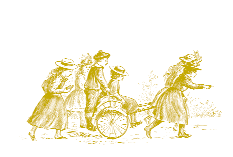 under died from motor vehicle collisions. Over half were not restrained in child-safety seats. During the same year, 7,473 children in the same age group suffered injuries in motor vehicle collisions statewide. Sixteen percent of these children were not in safety seats.
under died from motor vehicle collisions. Over half were not restrained in child-safety seats. During the same year, 7,473 children in the same age group suffered injuries in motor vehicle collisions statewide. Sixteen percent of these children were not in safety seats.
The universal difficulty in using the seats correctly makes matters worse. Data vary, but generally upwards of eighty percent of car seats are not used correctly, and many studies find almost every safety seat misused in some way. Types of misuse include using the wrong seat for the age and weight of the child, having the seat in the wrong location in the car (e.g., in the front seat of a car with an airbag), and not securing the seat tightly enough to the car or the child tightly enough in the seat. While there is a great range of misuses, two consistently emerge as among the most dangerous in a crash: a seat loose in the car or a harness loose on the child. In a collision, the car seat moves forward and the child can experience a secondary collision with the seat or the vehicle.
Clearly people don’t purposely put their children at risk, but not understanding the risks and a difficult technology conspire against them. The problem is especially acute for low-income families. Not only are car seats expensive, but older cars do not easily accommodate them.
More than eighty percent of child-safety seats are not used correctly.
Consider the following example:
A woman with two children, aged two and four, needs to visit the grocery store. She doesn’t have a car, so she gets a ride with a neighbor who owns an older two-door sedan. The car’s back seats don’t have shoulder belts and the bucket seats make an imperfect fit, so the two-year-old’s car seat cannot be installed securely. The four-year-old weighs over forty pounds, so he’s too big for most forward-facing car seats and, therefore, needs a booster seat. However, there are no booster seats made for cars without shoulder belts, so the four-year-old must ride in an adult seat with only a lap belt. This mother is doing the best she can. Given the family’s resources, she’s not able to comply with best practices—although she does meet the letter of the law, which allows for exceptions in cases like this one. Most important, the children’s safety is compromised.
Child Passenger Safety Initiative
Low-income children face twice the risk of dying from crash-related injuries compared to children from higher income families. To increase safety for these children, the California Health Care Safety Net Institute and the UC Davis Medical Center launched the Child Passenger Safety (CPS) Initiative with funding from the California Office of Traffic Safety. The initiative ran from April, 2001, through September, 2003, and had these goals:
- To increase safety seat use among families using public health care services;
- To decrease the rate of safety seat misuse among these families; and
- To increase awareness of the January 1, 2002 “booster seat” law which requires child safety restraints for children up to age six or sixty (Previously, the law required appropriate restraint for children up to four years and forty pounds.)
 Public hospitals and health care systems were chosen as intervention sites because they see many of the state’s children who are at most risk—almost three quarters of public hospital patients are low-income and/or uninsured. Each year public hospitals also treat thousands of children injured in motor vehicle collisions. The CPS Initiative worked with seven public hospitals and their clinics throughout Northern, Central, and Southern California. The program reached over 10,000 families, distributed thousands of child-safety seats to low-income families, provided assistance fitting children into seats, and trained health care staff, parents, caregivers, and foster parents.
Public hospitals and health care systems were chosen as intervention sites because they see many of the state’s children who are at most risk—almost three quarters of public hospital patients are low-income and/or uninsured. Each year public hospitals also treat thousands of children injured in motor vehicle collisions. The CPS Initiative worked with seven public hospitals and their clinics throughout Northern, Central, and Southern California. The program reached over 10,000 families, distributed thousands of child-safety seats to low-income families, provided assistance fitting children into seats, and trained health care staff, parents, caregivers, and foster parents.
Evolution of the CPS Initiative
The University of California Berkeley Traffic Safety Center developed and analyzed pre- and post-intervention surveys to evaluate CPS at three sites. The surveys consisted of interviews with parents or guardians at clinics and observations of children aged six and under in child-safety seats. Child Passenger Safety Coordinators conducted the surveys about one year apart, in the winter and spring of 2002 and 2003.
Interviewers asked questions to assess knowledge of the booster seat law and proper use of child restraints. Observers collected information on misuse regarding location of car seats, restraint type (i.e., for infants, toddlers, or young children), and how restraints were used.
Low-income children face twice the risk of dying from crash-related injuries compared to children from higher income families.
Results
We found that the initiative positively affected both amount of use and proper use of safety seats. Overall use increased by five percent, although booster-seat use did not. Specific types of serious misuse—such as not securing the safety seat tightly enough to the vehicle or positioning the harness clip incorrectly—dramatically decreased.
Misuse in this study confirmed widespread challenges with choosing and installing child-safety seats. The task is especially challenging for families who have more than one small child, who have older cars, or who do not own cars, characteristics shared by many low-income families.
While child-safety seats are underused or misused by all socioeconomic groups, specific barriers face low-income people. A short list of these includes: the need for frequent transfer of the car seat; the problem of fitting car seats into older cars without recently mandated attachments to ease installation; the use of hand-me-down car seats which may be old, difficult to install, or perhaps even the subject of a product recall; the 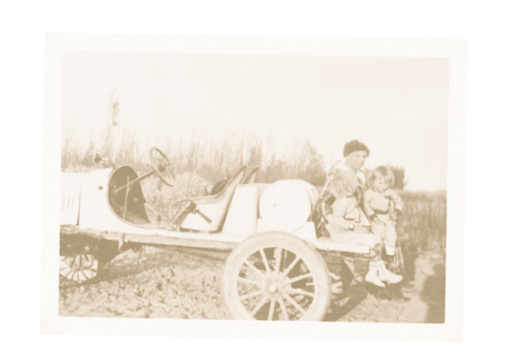 perception among some groups that children are safer on laps than in safety seats; and language barriers which make installation instructions difficult to follow.
perception among some groups that children are safer on laps than in safety seats; and language barriers which make installation instructions difficult to follow.
The CPS Initiative addressed these difficulties by making available free or low-cost safety and booster seats, workshops in English and Spanish, and one-on-one installation assistance. These outreach efforts took place where the target population came to get health care services, and thus did not require a separate trip.
The Initiative focused on setting up systems to ensure program continuation over the long run; recruiting and training medical and nursing staff; integrating CPS policy into hospital service delivery systems; and acquiring ongoing funding to support outreach and car-seat distribution.
Addressing the Barriers: What Else We Need to Do
Reach underserved populations
Outreach and educational efforts that specifically target children in low-income communities can make a large difference in overall child safety. Such efforts should focus on increasing safety seat use by eliminating cost and access barriers and on decreasing the most serious and common types of misuse. Hands-on workshops—not just passive brochures—conducted in multiple languages are crucial. Activities should be conducted at public hospitals and heath care centers, churches, day-care centers, community centers, and other institutions serving groups that are at risk.
Integrate CPS into health care systems and continuing education efforts
Traffic injuries cost California $20 billion in 2000. Motor vehicle injury deaths lead all other types of injury death for children over age two. Increasing children’s safety in cars can reduce emergency room and rehabilitation costs. Public health care systems thus benefit financially from a good prevention program.
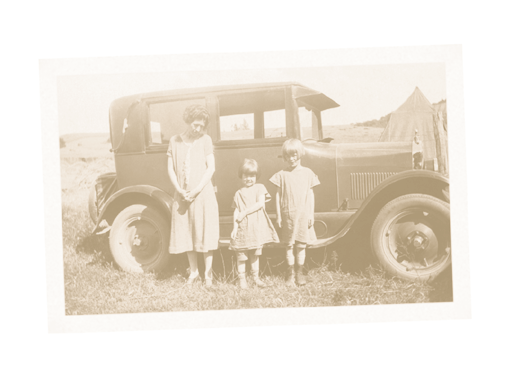 Unfortunately, prevention programs often fall prey to budget cuts, and child passenger safety programs are no exception. Without clear protocols establishing it as part of regular health care and health education services—and lacking champions within hospitals—CPS will fall between the cracks. This risk is exacerbated by the fact that CPS falls outside traditional clinical health services and can be seen as “dispensable” given budget crises and stretched schedules. It is essential to acknowledge the role of CPS (and other injury prevention strategies) in preventing need for emergency and other treatment services; prevention saves lives and money.
Unfortunately, prevention programs often fall prey to budget cuts, and child passenger safety programs are no exception. Without clear protocols establishing it as part of regular health care and health education services—and lacking champions within hospitals—CPS will fall between the cracks. This risk is exacerbated by the fact that CPS falls outside traditional clinical health services and can be seen as “dispensable” given budget crises and stretched schedules. It is essential to acknowledge the role of CPS (and other injury prevention strategies) in preventing need for emergency and other treatment services; prevention saves lives and money.
Integrating CPS into continuing education for health professionals multiplies the chances that parents and guardians will learn about updated research on CPS. My daughter’s pediatrician, for example, already reminds me to always use a safety seat in the back seat of my car. With more information, she could also explain the urgency of correctly securing the seat in the car, and my daughter in the seat.
Research and evaluate safety programs and injury patterns
Further understanding types and severities of injuries related to misuse, attitudes toward use, and effective approaches would help guide CPS efforts. Research on vehicle and child-restraint design to protect children and improve the fit between vehicles and child restraints is needed. Regarding work with vulnerable populations, we must answer questions addressing outreach and policy efforts. Which approaches best reach vulnerable populations? What are the most important safety messages to convey to parents? What impact does integrating CPS into health care services have on use of restraints? Research has found that the most important correlation with safety seat use is the driver’s use of seat belts: drivers who buckle up are more likely to put their children in safety seats than those who don’t. How can this information most effectively be used to increase safety?
Pay attention to policy and advocacy
Policy and advocacy efforts should be part of any injury prevention effort. Laws often provide the muscle behind educational and enforcement efforts to promote public health. According to NHTSA, good laws include age and weight guidelines that reflect research on child development and injuries, cover all seating positions in a vehicle, require all vehicles to have safety belts, contain provisions for enforcement, and eliminate exemptions. One area for potential advocacy could be addressing the lack of booster seats manufactured for older cars without shoulder belts, which prevents many lower-income children from riding safely.
California’s child passenger safety law SB 567 (the “booster seat” law) provided impetus to the CPS Initiative. Not only did it specify increases in the age and weight requirements for securing children, it included provisions whereby economically disadvantaged families could obtain child restraints, and it defined a public health education role for health care providers.
Collaborate through multidisciplinary coalitions
Child safety is and should be everyone’s business. Health care leaders, law enforcement and traffic safety professionals, social workers, educators, business leaders, automobile and car seat manufacturers and retailers, and community members are all natural partners for child safety efforts. Broad-based groups focused on child safety reduce the stress on a single system—health care, for example—and promise more far- reaching results. Further, comprehensive programs that include legislation, training, enforcement, and community-oriented strategies such as seat distributions can increase use.
reaching results. Further, comprehensive programs that include legislation, training, enforcement, and community-oriented strategies such as seat distributions can increase use.
Great advances have been made to protect children, and all children should have access to these advances. The Child Passenger Safety Initiative has played an important role in reaching California’s most vulnerable children. Even during times of budget crisis, it is crucial to remember the risk children face in vehicles and consider it our mandate to protect them.
Co-authors on this study include David Ragland, Director, Berkeley Traffic Safety Center; Kara MacLeod, Research Associate, Berkeley Traffic Safety Center; and Wendy Jameson, Director, California Health Care Safety Net Institute.
Further Readings
Phyllis F. Agran, et al, “Factors Associated with Restraint Use of Children in Fatal Crashes,” Pediatrics, vol. 102, no. 3, p. e39, September 1998.
Susan P. Baker, et al, “Motor Vehicle Occupant Deaths Among Hispanic and Black Children and Teenagers,” Archives of Pediatric and Adolescent Medicine, vol. 152, pp. 1209–1212, December 1998.
Francesca Valent, et al, “Restraint Use and Injury Patterns among Children Involved in Motor Vehicle Collisions,” The Journal of Trauma, Injury, Infection and Critical Care, vol. 52, no. 4, April 2002.

